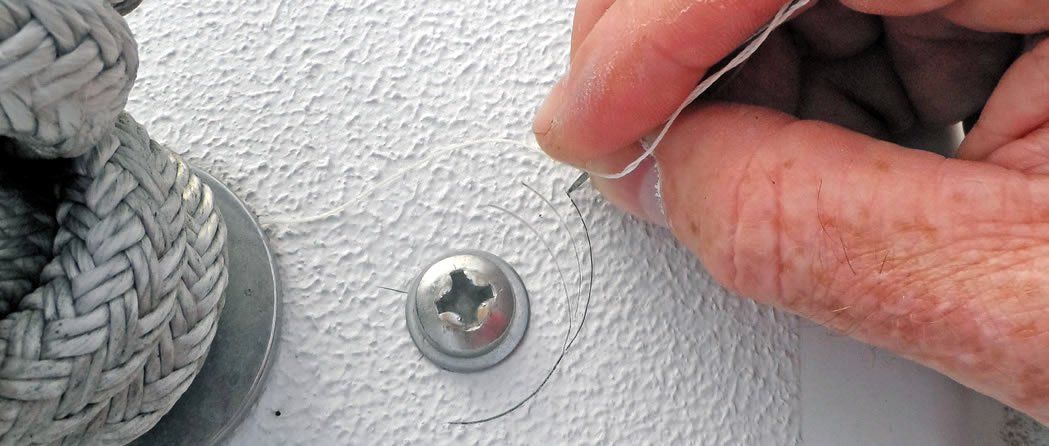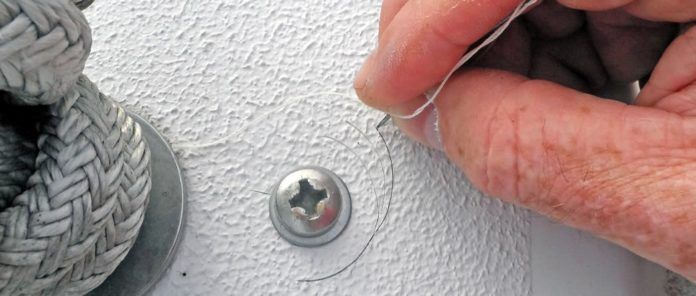Spider cracks can indicate impact damage or serious structural problems that will need to be addressed to prevent spreading, but most often they result from relatively inflexible gelcoat that is too thick. Stress by thermal expansion or when bulkheads and liners were installed can cause minor flexing. Cracks from larger issues-a winch, for example, that was inadequately mounted-will need to be fixed before cosmetic repairs begin.

Our test boat has had a few spider cracks since a few months after she came out of the mold. They never got worse. A prior owner had fixed a few with Evercoat Gel Coat Scratch Patch gel coat repair, with ugly results. We tried West Marine Gel Coat Scratch Patch, and although very careful, the results werent really an improvement. Finally, we tried a very minimalist approach using Magic Ezy Hairline Fix. Its not cheap-$25 for a 0.43-ounce tube-but its hard to find a solution thats much cheaper except in buying a large volume of gelcoat that would go to waste. Its available in ten colors.
The instructions direct you to clean the cracks out with a fine needle and then to wash, rinse, and dry. Although slightly tedious, the needle step is very important. Do not attempt to widen the crack-the Fix will seep into very thin cracks. They then direct you to carefully fill, level, and wipe around the crack. This worked perfectly on flat sections, but it broke down for us on corner cracks or through non-skid, where leveling difficult. Where there is compound curvature, leveling is impossible. Instead, we often simply smeared the product over the cracked area, waited about 5-10 seconds (depending on temperature) and wiped it off firmly with a paper towel just before it set. Although this did not result in perfectly filled cracks, but they were now white and nearly invisible. Repeated treatments gave more improvement.
We like that we couldnt make things worse and that it was a simple project, without the need to trim after curing, sand and polish. It took just a few minutes of easy work, and after six months was still good.
They also sell a 9-Second Chip Repair Kit. Similar to Marine Tex, it was easy to use and can be finished using the crack repair product. We used it to repair two 3/16-inch voids left by bubbles during layup. How long it will last remains to be seen, but it certainly made for an easy repair. Just fill the hole and level with tube end, allow to cure, and finish with the Hairline Crack Repair. Recommended for cosmetic repairs.

































